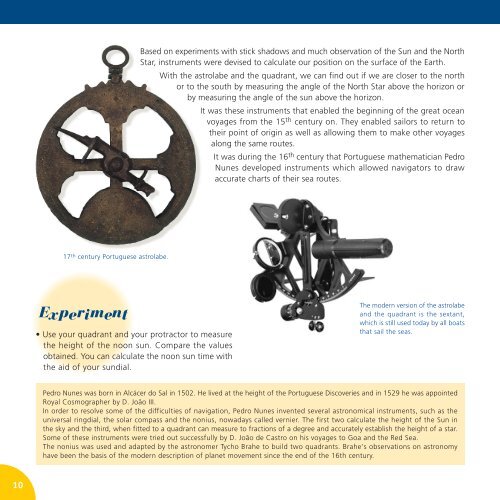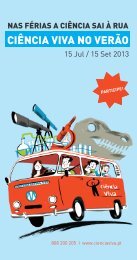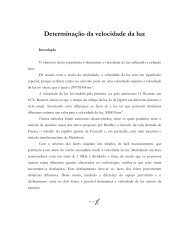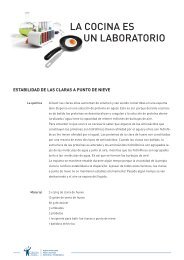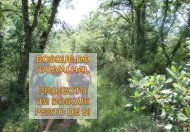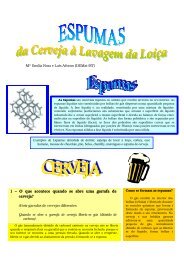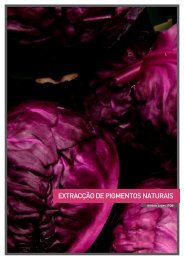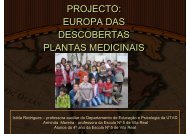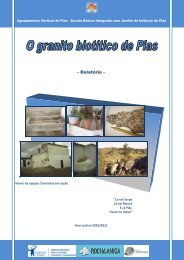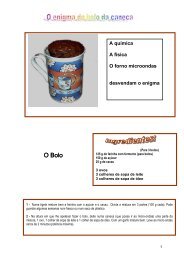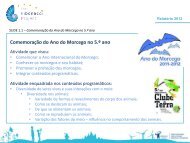Latitudes and Longitudes - Ciência Viva
Latitudes and Longitudes - Ciência Viva
Latitudes and Longitudes - Ciência Viva
You also want an ePaper? Increase the reach of your titles
YUMPU automatically turns print PDFs into web optimized ePapers that Google loves.
10<br />
17 th century Portuguese astrolabe.<br />
• Use your quadrant <strong>and</strong> your protractor to measure<br />
the height of the noon sun. Compare the values<br />
obtained. You can calculate the noon sun time with<br />
the aid of your sundial.<br />
Based on experiments with stick shadows <strong>and</strong> much observation of the Sun <strong>and</strong> the North<br />
Star, instruments were devised to calculate our position on the surface of the Earth.<br />
With the astrolabe <strong>and</strong> the quadrant, we can find out if we are closer to the north<br />
or to the south by measuring the angle of the North Star above the horizon or<br />
by measuring the angle of the sun above the horizon.<br />
It was these instruments that enabled the beginning of the great ocean<br />
voyages from the 15th century on. They enabled sailors to return to<br />
their point of origin as well as allowing them to make other voyages<br />
along the same routes.<br />
It was during the 16th century that Portuguese mathematician Pedro<br />
Nunes developed instruments which allowed navigators to draw<br />
accurate charts of their sea routes.<br />
The modern version of the astrolabe<br />
<strong>and</strong> the quadrant is the sextant,<br />
which is still used today by all boats<br />
that sail the seas.<br />
Pedro Nunes was born in Alcácer do Sal in 1502. He lived at the height of the Portuguese Discoveries <strong>and</strong> in 1529 he was appointed<br />
Royal Cosmographer by D. João III.<br />
In order to resolve some of the difficulties of navigation, Pedro Nunes invented several astronomical instruments, such as the<br />
universal ringdial, the solar compass <strong>and</strong> the nonius, nowadays called vernier. The first two calculate the height of the Sun in<br />
the sky <strong>and</strong> the third, when fitted to a quadrant can measure to fractions of a degree <strong>and</strong> accurately establish the height of a star.<br />
Some of these instruments were tried out successfully by D. João de Castro on his voyages to Goa <strong>and</strong> the Red Sea.<br />
The nonius was used <strong>and</strong> adapted by the astronomer Tycho Brahe to build two quadrants. Brahe's observations on astronomy<br />
have been the basis of the modern description of planet movement since the end of the 16th century.


